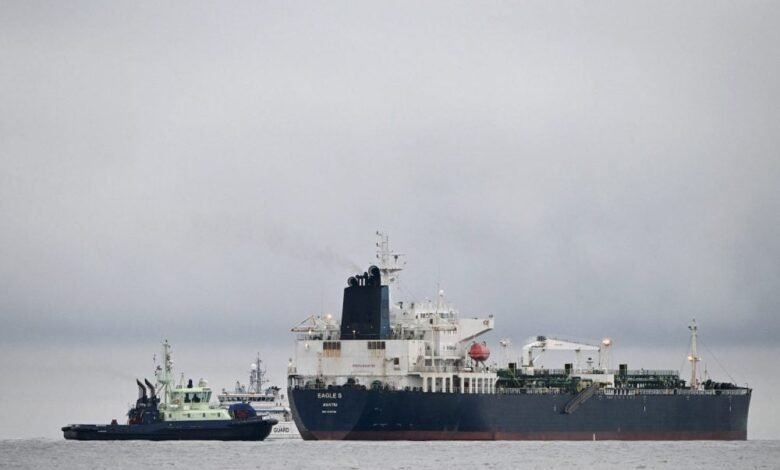Finnish Court Case on Russian Cable-Cutting Sabotage Concludes

Case dismissed! In the Helsinki District Court, a pivotal trial involving three international sailors has just concluded. The three officers were responsible for the Shadow tanker that collided with at least five undersea cables in the Gulf of Finland in December 2024. Now, the court has delivered its ruling in the landmark case: Although it found that the officers committed serious criminal damage, it ruled that Finland lacked the jurisdiction to prosecute them. This means that ships can cut cables with impunity almost everywhere.
Or at least they can for now. Prosecutors have just announced they will appeal the ruling, giving more hope to those who want to see accountability prevail.
Case dismissed! In the Helsinki District Court, a pivotal trial involving three international sailors has just concluded. The three officers were responsible for the Shadow tanker that collided with at least five undersea cables in the Gulf of Finland in December 2024. Now, the court has delivered its ruling in the landmark case: Although it found that the officers committed serious criminal damage, it ruled that Finland lacked the jurisdiction to prosecute them. This means that ships can cut cables with impunity almost everywhere.
Or at least they can for now. Prosecutors have just announced they will appeal the ruling, giving more hope to those who want to see accountability prevail.
You may remember the dramatic scene that took place on Christmas Day last year: Finnish border guards and police officers rappelling, in the dark, into… Eagle S. The scene occurred in the Gulf of Finland, where, within a few hours, the tanker collided with an undersea power cable and four data cables. When the Finnish border guards and police intervened,… Eagle S He was approaching another power cable. If the Finns had done nothing, the Shadow tanker – which was en route from the Russian port of Ust-Luga on the Baltic Sea – could have collided not only with this cable, but also with more data cables.
Seizing the tanker was a bold move. Cook Islands flag Eagle S These ships belong to Russia’s shadow fleet, a group of ships that transport Russian oil to countries such as India and China in violation of Western oil price caps. This makes the fleet indispensable for Russia. The Finns knew that if they tried to seize the tanker, Russia might retaliate in some way.
There was another problem: when the Finns took over… Eagle SThe ship was in Finland’s exclusive economic zone, and the damage occurred in Finland’s exclusive economic zone as well. Countries have full jurisdiction in their territorial waters, which extend a maximum of 12 nautical miles from shore, but this is not the case in a country’s exclusive economic zone. The United Nations Convention on the law of the Sea (UNCLOS) stipulates that within their economic zones, coastal states only have “sovereign rights” for the purpose of specific economic and environmental activities.
That police and border guard officers detained a ship in the EEZ and moved it into territorial waters was aggressive and, in the eyes of some, completely illegal. But as far as the Finns were concerned, they had to stop it Eagle S Before they cause further damage to the indispensable facilities on the seabed. By the time they took control of the tanker, it had pulled its anchor about 62 miles, and the Baltic Sea had been plagued by more than two years of mysterious incidents involving cables and pipelines.
In August, the ship’s captain and two senior officers were charged with aggravated criminal acts, and communications interference proceedings and a trial began the same month. Since the cables had been cut in the exclusive economic zone, the fact that there was a trial at all was a sign of Finland’s resolve. It was also a gamble because prosecutors would need to prove officers intended to commit harm. Will Finnish prosecutors be able to prove that the crew intentionally pulled the anchor? If it can overcome the question of jurisdiction and the question of intent, other countries affected by cable accidents may decide to follow the same strategy.
On the first day of the trial, the three officers maintained their innocence, arguing that the damage to the cables was an accident and that a faulty winch had caused the anchor to fall into the water. the Eagle S It’s actually an old, rusty bucket, owned – like almost all Shadow Ships – by a copperplate company. in Eagle SIn the case of a company, the owner lists the business center in a Dubai hotel as his address. Finnish journalists were able to identify the owner: a Russian-speaking woman with an Azerbaijani passport who owns at least seven front companies.
As the trial continued, prosecutors delivered a powerful surprise. They did not address whether the three officers intentionally pulled the ship’s anchor. Instead, they claimed that by boarding a vessel so unseaworthy that the crane – which holds the anchor – could become stuck, the three men had shown intent to cause harm. It was a clever way to get around the seemingly insoluble dilemma of how to prove intent to damage the cables. The prosecutors also presented an innovative approach to the issue of jurisdiction: since the consequences of criminal acts were embodied in Finland, the country had jurisdiction.
The prosecution presented startling facts. The tanker’s black box stopped recording its position before the tanker collided with the Estlink2 power cable. On January 7, when Eagle S Its crew is detained in Finland, and the ship’s management company – based in a small shared office building on the outskirts of Mumbai – has ordered the captain to destroy evidence. “Do not share this list with anyone, please. Destroy it. Because they will come back and demand compensation for all the damages,” the company told the captain – neither of them realizing that the Finnish police were listening.
On September 10, the trial ended. The prosecution had demanded a prison sentence of at least two and a half years. This may not seem like a lot, especially since the December incident cost cable owners at least €60 million. But there was a lot at stake, including the crucial point of whether the rust bucket ascent amounted to intent to damage the undersea facilities. If the court agrees with prosecutors on the officers’ guilt and the question of jurisdiction, it could serve as a significant deterrent against cable outages.
On October 3, the court issued its ruling. The court ruled that the withdrawn anchor had caused “very serious economic losses within the meaning of the legal definition of the offense pursued by the alternative charge, i.e. serious criminal damage suffered in Finland.” Prosecutors had persuaded the court on the issue of intent, but ruled that “it is not possible to apply Finnish criminal law to the case.” In other words, Finland lacked jurisdiction.
With UNCLOS clearly distinguishing between territorial and non-territorial waters, the ruling was not entirely surprising. But it’s all about the same. Finland tried to thwart cable accidents using the rule of law, but failed. Countries may have a new legal tool against any acts of sabotage that occur in their territorial waters. But if the next appeal fails, would-be cable and pipeline vandals will be able to safely damage cables and pipelines as long as they remain outside anyone’s territorial waters.
Don’t miss more hot News like this! Click here to discover the latest in Politics news!
2025-10-10 17:25:00




